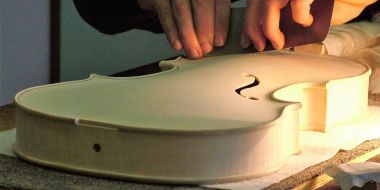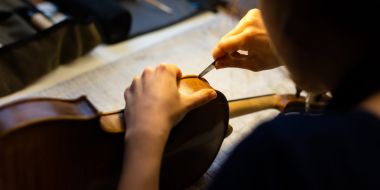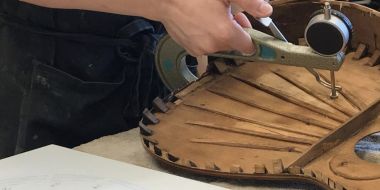Plucked instruments
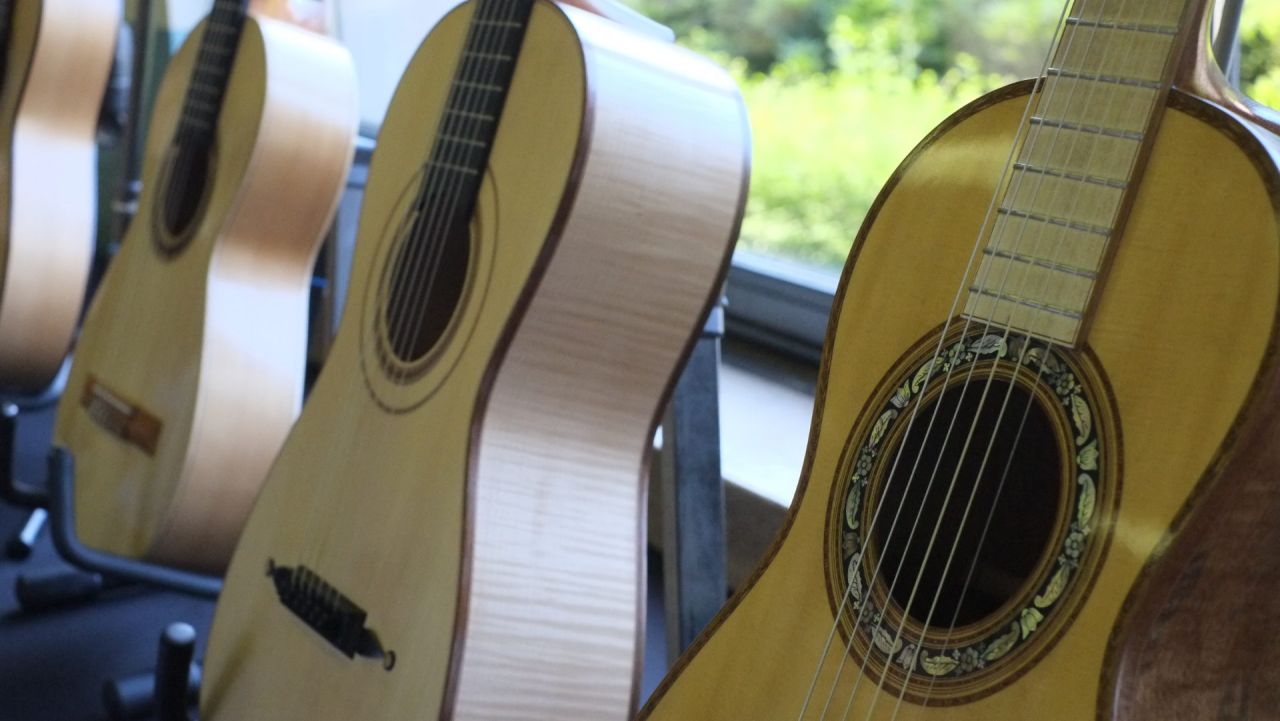
Training
In the second year you will build a classical guitar model by José L. Romanillos. The method used is based on traditional Spanish-style guitar building. Advanced techniques are taught such as inlay work, bending and working different types of wood, making special parts, and polishing and adjusting the guitar.
In the third year, students can specialize within the historical plucked instruments group. The progress of each student determines which instrument will be built. The guidance is more individually oriented and a certain degree of independence is also expected.
Instruments to be built
- Renaissance lute (model Wendelio Venere 1582)
- Baroque guitar (flat or curved back and sides, 17th century)
- Romantic guitar (early 19th century)
- Steel string guitar (very early model ca. 1860)
- Classical concert guitar
The techniques taught are of a high standard and will be assessed by an external jury at the end of the school year.
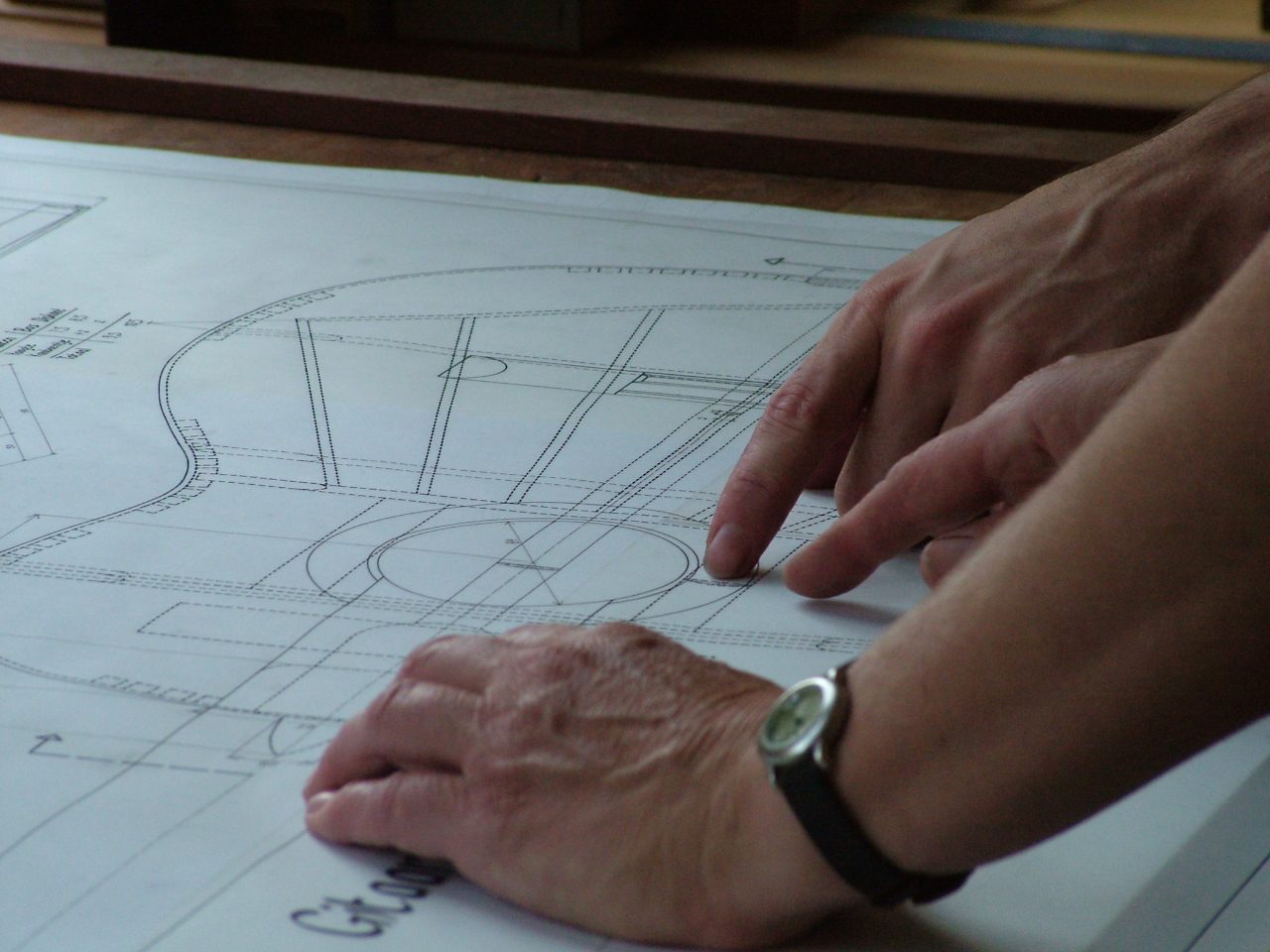
Technical subjects
The technical subjects cover a wide range of knowledge specific to stringed instruments: the history of violin and guitar making, the great European traditions, stylistic studies, scientific research, the study of literature, the study of wood, professional ethics, listening exercises, applied acoustics, and so on.
Many of these lessons are given in or around the practice rooms or are integrated into the practical lessons themselves.
Sometimes visits are planned to concerts, museums, or wood traders abroad.
In Technical Drawing, building plans or contour studies are drawn, both manually on paper and digitally with Autocad software.
In Music, the students make music. The level is adjusted to the individual capacities of each student. Small performances are organized during certain events.
At the end of each academic year, a studio concert is held at which professional musicians play the newly completed instruments made by our students. Before that, there is also feedback for the students during which the professional musicians judge the instruments on their playing qualities. This is an instructive moment that our students look forward to!
| subject | Hours per week | Teacher |
|---|---|---|
| Practice | 16 | Els Jagenau / Ken Van Hoeylandt |
| Technology | 4 | Els Jagenau / Ken Van Hoeylandt |
| Technical drawing | 2 | Els Jagenau / Ken Van Hoeylandt |
| Music | 2 | Bert Van Goethem |
Internship
Compulsory internship placements are included in the 3rd year of instrument making and in the restoration year.
In consultation with the teacher, the student looks for an internship with an established builder or restorer. Museums can also offer suitable work experience places.
The duration varies from 2 to 3 weeks. The contacts and experiences that the student gains in this way are very important.
ILSA aims to train high-quality violin- and guitar makers. This cannot be done without giving them the opportunity to test themselves against the reality of the profession. That is why the extra year of restoration is very important. In combination with the external apprenticeships with renowned luthiers, it forms an ideal starting point for learning to work with master builders.
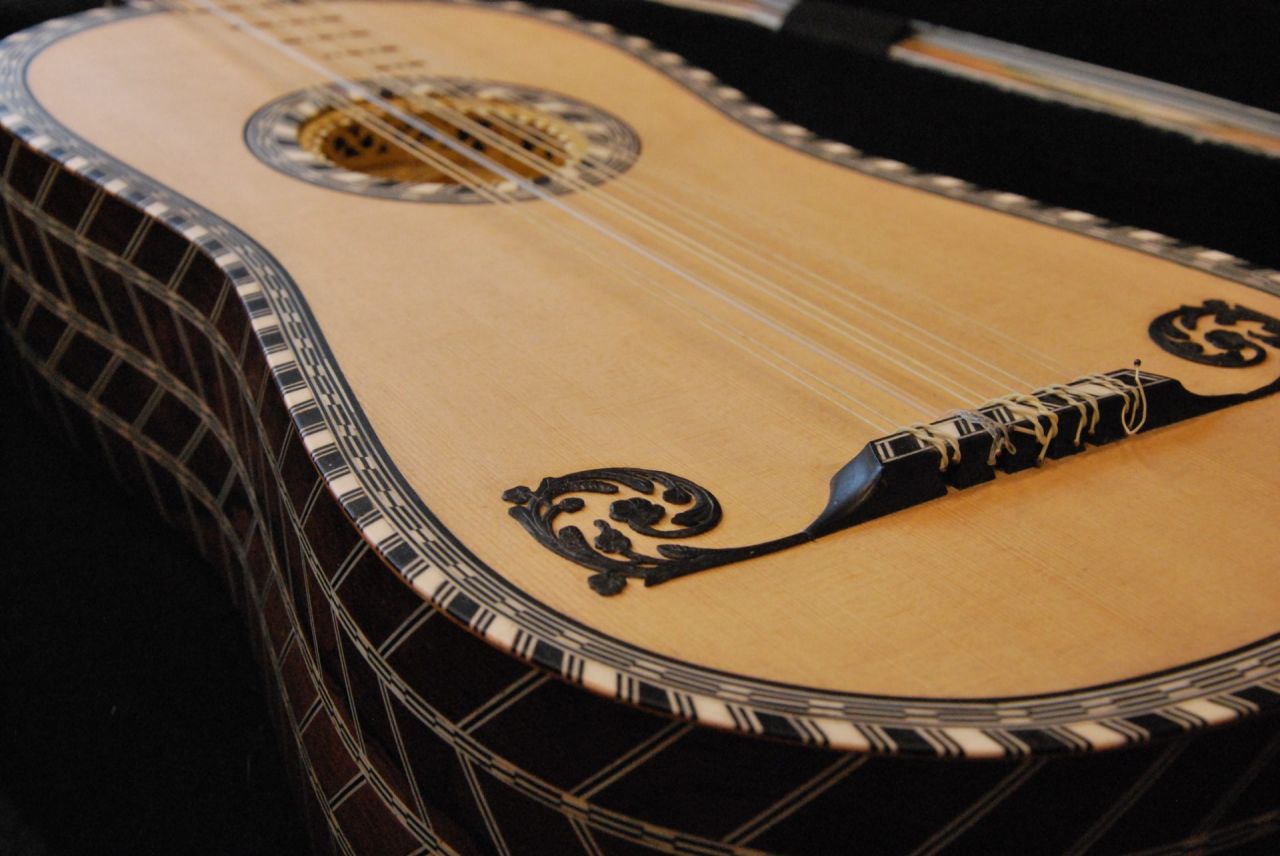
Baroque guitar build bij Lennert Van De Velde.

